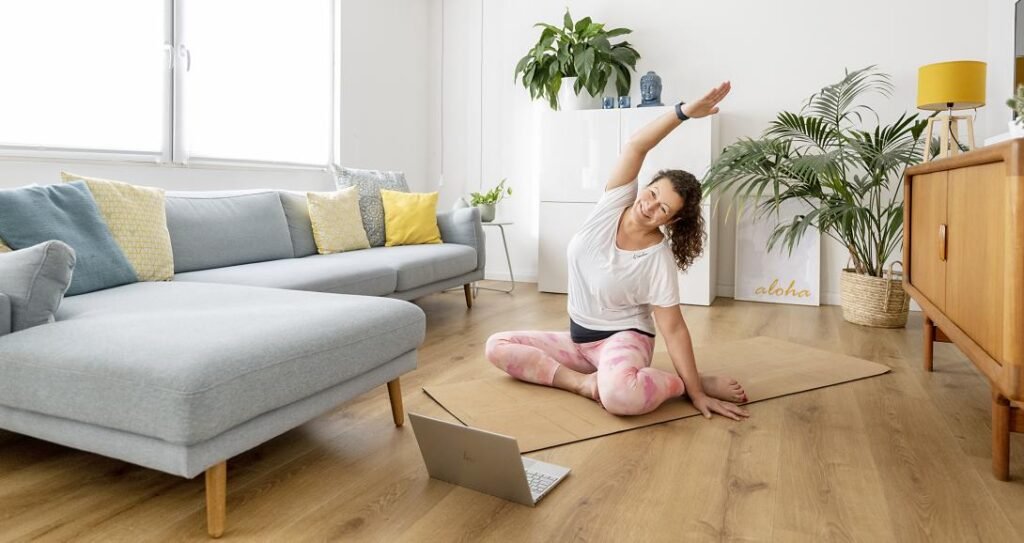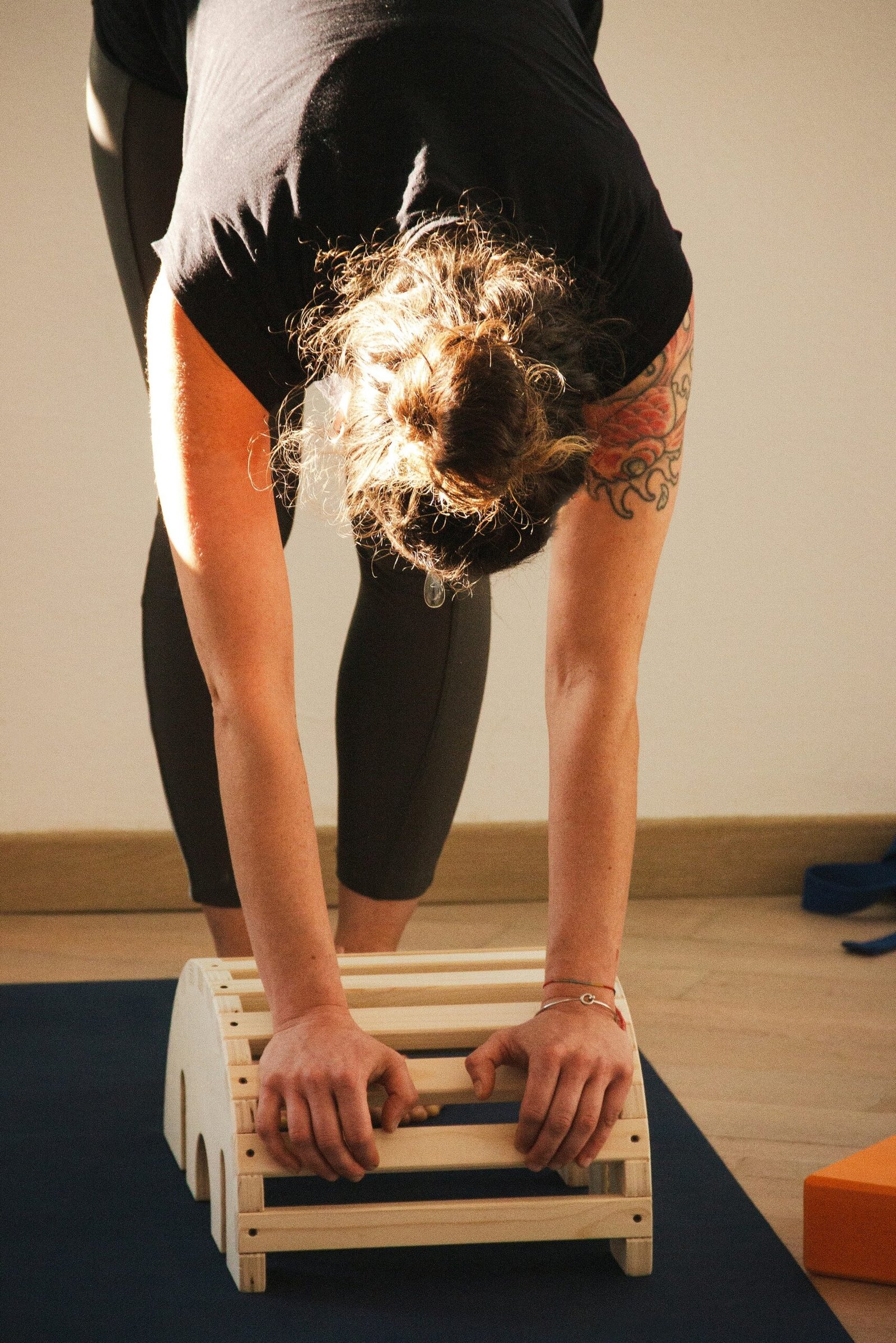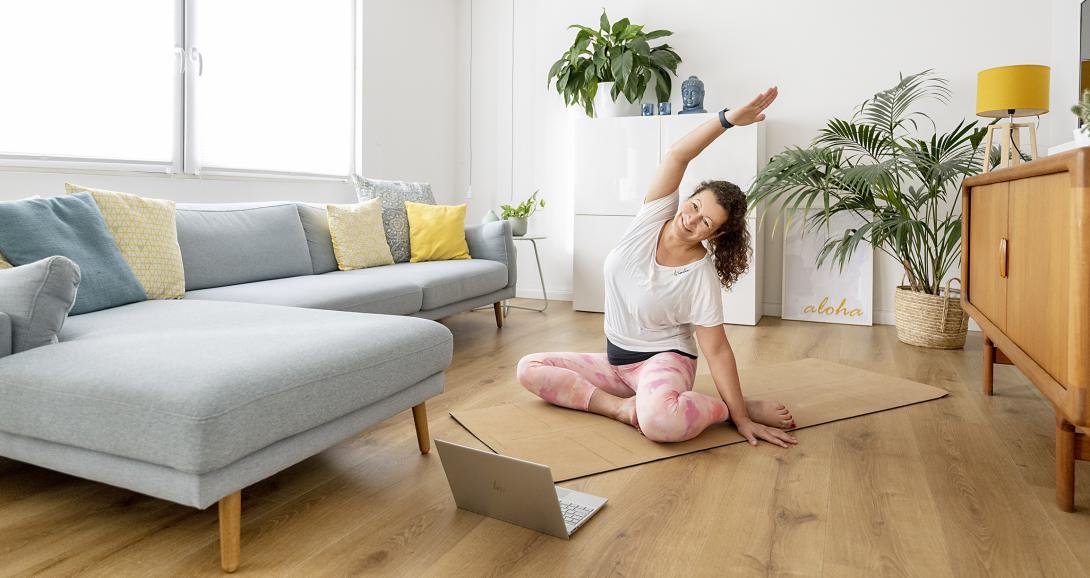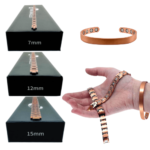Introduction to Pilates
Pilates is a low-impact exercise method that emphasizes the connection between the body and mind, developed in the early 20th century by Joseph Pilates. Originally created as a form of rehabilitation for injured soldiers during World War I, this practice has evolved into a widely recognized fitness regime that focuses on developing core strength, flexibility, and proper postural alignment. Joseph Pilates, a German-born physical trainer, believed that physical fitness was essential to overall well-being. His approach combined elements of Western exercise systems with Eastern philosophies, fostering a holistic view of health and movement.
The principles of Pilates revolve around six core concepts: concentration, control, center, flow, precision, and breathing. Concentration is essential in Pilates, as individuals are encouraged to focus entirely on their movements and the sensations they produce. Control refers to the mindful execution of each exercise, ensuring that movements are performed with precision rather than speed. The “center” concept highlights the importance of strengthening the core muscles, which serve as the foundation for all physical movements. Flow encourages seamless transitions between exercises, promoting a sense of rhythm and grace throughout the practice. Precision ensures that each movement is executed accurately, enhancing effectiveness and reducing the risk of injury. Lastly, proper breathing techniques are emphasized to facilitate oxygen flow and support the body’s movements.
Engaging in Pilates can lead to numerous benefits, including improved flexibility, strength, and posture. The exercises are designed to enhance muscular endurance while also promoting alignment and stability. As practitioners become more attuned to their bodies, they may experience a significant increase in overall awareness and a more profound mind-body connection. This holistic approach ultimately provides a pathway to improved physical fitness and mental clarity
.RELATED ARTICLES :https://asadmarket.com/2025/02/24/unlocking-wealth-discovering-the-millionaire-partner-system/.
The Benefits of Pilates
Pilates, a low-impact exercise method developed by Joseph Pilates, has gained immense popularity due to its multifaceted benefits, which can be categorized into physical and mental advantages. One of the primary physical benefits of Pilates is the significant improvement in core strength. The exercises are meticulously designed to engage and strengthen the core muscles, which include the abdominals, obliques, and lower back. This enhanced strength does not only contribute to better posture but also facilitates better performance in various athletic activities.
In addition to core strength, Pilates also promotes improved flexibility. Through a series of slow, controlled movements and stretching techniques, individuals can gradually increase their range of motion. Improved flexibility is particularly beneficial for athletes, as it can lead to better performance and a decreased risk of injuries. The emphasis on alignment and balance in Pilates also helps trainees identify and correct any muscle imbalances they may have, further contributing to injury prevention.
The mental benefits of Pilates are equally noteworthy. Regular practice can lead to a reduction in stress and anxiety levels. The method encourages mindfulness, as participants focus on their breath and movements, promoting a state of mental clarity and relaxation. This aspect can be particularly advantageous for individuals facing stress in their daily lives, as Pilates acts as a form of therapy that encourages a mindful retreat from daily pressures.
Scientific studies have corroborated these claims, indicating that individuals who regularly engage in Pilates experience better physical health and emotional well-being. Moreover, personal testimonials often highlight profound transformations, showcasing improved athletic performance, enhanced flexibility, and a more balanced mindset. Such evidence underscores the holistic benefits of Pilates, making it more than just an exercise routine, but rather an essential practice for both physical and mental health.
Different Types of Pilates
Pilates is a versatile exercise regimen that encompasses various styles, each designed to cater to differing needs, fitness levels, and preferences. The primary types of Pilates include Mat Pilates, Reformer Pilates, and Clinical Pilates, among others, each offering unique characteristics and benefits.
Mat Pilates is typically practiced on a mat with no specialized equipment. This style emphasizes body weight resistance, focusing on controlled movements and core stability. The exercises are intended to strengthen the core muscles, improve flexibility, and promote physical awareness. Mat Pilates can be suitable for beginners as well as those looking for a low-impact workout. The absence of equipment allows for easy integration into home workouts.
Reformer Pilates involves the use of a reformer machine, which is equipped with adjustable springs and pulleys. This equipment provides both resistance and assistance, enabling a diverse range of exercises that can be tailored to the individual’s fitness level. Reformer Pilates is widely recognized for its effectiveness in enhancing strength, flexibility, and overall body alignment. It is beneficial for those seeking more progressive training or rehabilitation support.
Another notable type is Clinical Pilates, which is often marketed toward individuals recovering from injury or managing chronic pain. It typically involves specialized guidance from a trained health professional and may incorporate modified Pilates exercises that cater specifically to the individual’s rehabilitation needs. This approach emphasizes safe movement patterns, helping to restore functionality and promote healing.
Beyond these, there are fusion styles, like Pilates-Yoga or Pilates-Barre, which combine elements from other fitness modalities, broadening the appeal of Pilates to a wider audience. Each style fosters unique benefits, hence selecting the suitable type depends on personal fitness goals, health conditions, and preferences.
Getting Started with Pilates
Embarking on a Pilates journey can be both exciting and transformative. For beginners, the initial step is often identifying suitable classes or qualified instructors. When searching for Pilates options, consider local studios, community centers, or fitness clubs that offer introductory sessions. It is beneficial to read reviews or seek recommendations from friends to ensure you find a knowledgeable instructor who can provide proper guidance. Many studios offer beginner-friendly classes that focus on foundational movements, enabling newcomers to build a solid base.
During your first Pilates session, expect an emphasis on breathing, alignment, and core strength. Instructors often introduce the principles of Pilates, helping participants understand the importance of proper form and controlled movements. Embrace the process and remember that everyone progresses at their own pace; it is essential not to feel overwhelmed. Setting realistic goals can enhance your experience; whether that means improving flexibility, strength, or simply gaining a better mind-body connection, having clear objectives can foster motivation.

As for attire, opt for comfortable and form-fitting clothing that allows for free movement. Many practitioners prefer stretchy fabrics that stay in place during transitions and exercises. Footwear can vary, but Pilates is often practiced barefoot or with grip socks to promote stability and enhance your connection with the mat. When considering equipment, most beginner classes utilize mats, but props such as resistance bands or small weights may also be introduced as you become more comfortable.
Importantly, warming up before each Pilates session is crucial to prevent injury and prepare your body for movement. Focus on gentle stretches to loosen your muscles and enhance circulation. As you progress, continually prioritize form and alignment; these practices are integral to maximizing the benefits of Pilates while minimizing the risk of strain. Opening yourself to the principles of Pilates can lead to lasting improvements in strength and flexibility, making each session a stepping stone in your fitness journey.
Pilates Techniques and Principles
Pilates is a physical fitness system that emphasizes a mind-body connection, focusing on the development of strength, flexibility, and coordination. Central to practicing Pilates are its core principles, which are fundamental for achieving maximum benefits from the exercises. Key amongst these principles are concentration, control, centering, flow, precision, and breathing, each playing a crucial role in effective Pilates practice.
Concentration in Pilates entails dedicating one’s full attention to the exercises being performed. This mindfulness enhances the quality of movements, ensuring that practitioners engage their muscles properly and execute movements with intent. Control is equally important, focusing on the body’s ability to move in a deliberate manner. This aspect is about mastering both the coordination of muscles and the flow of movements, minimizing the risk of injury while maximizing effectiveness.
Centering refers to the core principles of Pilates, which prioritize the core muscles, including the abdominal, back, and pelvic regions. Ensuring stability through the body’s center allows for proper alignment and efficient movement patterns. This principle correlates closely with the flow of exercises, where movements seamlessly transition from one to another, creating a harmonious dance-like quality to the practice. Such fluid motion elevates the exercise experience, fostering a sense of grace and balance.
Precision is essential in Pilates, requiring precise execution of movements to achieve desired results and target specific muscle groups effectively. Each exercise is performed with careful attention, which not only enhances effectiveness but also reinforces the appropriate muscle memory. Finally, the principle of breathing is integral, emphasizing the synchronization of breath with movements. Proper breathing techniques enhance oxygen flow, promoting relaxation and deeper engagement in each exercise.
By understanding and applying these principles, practitioners can significantly improve their Pilates practice, leading to enhanced physical performance, better posture, and overall well-being.
Common Misconceptions about Pilates
Pilates is often surrounded by misconceptions that can mislead prospective practitioners regarding its effectiveness and suitability. One of the most pervasive myths is that Pilates is exclusively for women. This assumption may stem from its origins and aesthetic appeal. However, the practice is designed to enhance core strength, flexibility, and overall body awareness, making it beneficial for individuals of all genders. Many male athletes, including dancers and professional sports players, have begun to integrate Pilates into their training regimens, recognizing its efficacy in improving performance and preventing injuries.
Another common misconception is that Pilates is an easy workout suitable only for beginners. In reality, Pilates can be tailored to different fitness levels and goals. The practice comprises a series of exercises that can be modified to challenge individuals as they progress. Beginners may start with basic movements to understand core engagement and proper alignment. However, as practitioners become more familiar with the principles of Pilates, they can move on to advanced techniques that require significant strength, control, and endurance. Therefore, it should be viewed as a versatile fitness method capable of providing formidable challenges to individuals at any level.
Additionally, some individuals erroneously believe that Pilates exclusively emphasizes flexibility and does not build muscle strength. This notion undermines the fundamental principles of the practice. Pilates is specifically designed to enhance muscle tone, particularly in the core, arms, and legs. The resistance principles applied through equipment such as the reformer or mat help to strengthen muscles, ensuring a well-rounded fitness experience. Overall, understanding these misconceptions about Pilates can empower individuals to view it as a comprehensive fitness option that caters to a diverse range of goals and abilities.
Pilates for Rehabilitation
Pilates has gained recognition as an effective tool for physical rehabilitation, utilized by physiotherapists to aid patients in their recovery from injuries or surgeries. This method emphasizes controlled movements and a strong focus on alignment, which sets it apart from conventional rehabilitation approaches. The exercises are designed to enhance flexibility, strength, and stability, thereby fostering a holistic recovery process.
One of the primary advantages of Pilates in rehabilitation is its gentleness, allowing patients to engage their bodies without placing undue stress on their injured areas. This is particularly beneficial for individuals recovering from musculoskeletal injuries, surgical interventions, or chronic pain conditions. Through specific exercises, patients learn to cultivate body awareness and coordination, which are critical for regaining functional movement patterns.
Unlike traditional rehabilitation methods that may rely heavily on more vigorous exercises or passive treatments, Pilates encourages active participation. Patients are guided to perform exercises that target specific muscle groups while ensuring proper alignment and form. This focus on control and precision helps to strengthen the core musculature, which is vital for maintaining stability and preventing future injuries.
Furthermore, Pilates promotes the integration of breath with movement, enhancing relaxation and reducing stress during the rehabilitation process. This mind-body connection is essential for cultivating a positive, healing environment, enabling patients to navigate their recovery journey with confidence and awareness.
Incorporating Pilates into rehabilitation programs offers physiotherapists a unique set of tools to address patients’ individual needs. By tailoring exercises to specific conditions, practitioners can facilitate a more effective recovery process, helping patients regain strength and functionality in a supportive framework. As a result, Pilates has emerged as a valuable component in modern rehabilitation practices.
Integrating Pilates into Your Fitness Routine
To effectively incorporate Pilates into your fitness regimen, it is advisable to start by determining how often you can practice. While individual schedules may vary, aiming for two to three sessions per week can provide significant benefits. This frequency allows for muscle recovery while ensuring consistent progression. As you become more accustomed to the exercises, you may decide to increase the number of sessions or their intensity, depending on your affinity for the practice.
Integrating Pilates with other forms of exercise is a strategic approach to enhancing overall fitness. For individuals engaged in high-impact activities, such as running or weightlifting, Pilates serves as an effective counterbalance. The focus on core strength and flexibility in Pilates can mitigate the risk of injury and improve performance in these intensity-driven workouts. A well-rounded fitness routine might include Pilates sessions on alternate days from more strenuous activities, ensuring a harmonious balance between strength, flexibility, and endurance.
Tracking progress is essential when incorporating Pilates into your fitness routine. Keeping a journal to document insights about your sessions can be beneficial. Note improvements in flexibility, strength, or endurance, and be mindful of how Pilates enhances your performance in other exercises. Moreover, setting specific goals, such as mastering particular movements or increasing the duration of your sessions, can keep you motivated and engaged. Remember that Pilates is also an invaluable tool for cross-training, diversifying your workouts and preventing exercise monotony.
Ultimately, the integration of Pilates into your fitness journey not only aids in improving overall strength and flexibility but also complements other physical activities. By actively blending Pilates with your existing routine, you enhance your fitness spectrum while fostering a more holistic approach to health and wellbeing.
Finding Your Pilates Community
Connecting with a Pilates community can serve as a significant motivational tool in your fitness journey. Engaging with others who share similar interests can foster a supportive environment that encourages consistency and commitment to practice. One effective way to establish this connection is through local studios, which typically offer a range of classes suited to different levels of experience. Attending classes in person provides the opportunity to meet fellow enthusiasts, instructors, and mentors who can inspire and guide you throughout your Pilates journey.
In addition to local studios, online classes have gained considerable popularity, especially in recent years. Virtual platforms enable you to participate in a wide variety of Pilates sessions, ensuring you have access to expert instruction from the comfort of your home. Many online communities also feature discussion boards or forums where members can exchange tips, advice, and experiences. This global reach not only broadens your understanding of Pilates practices but also allows for interaction with a diverse group of individuals passionate about fitness.
Participating in Pilates workshops or retreats is another excellent avenue to connect with the community. These events often focus on skill development and provide intensive sessions that delve deeper into specific practices. Furthermore, these gatherings can lead to long-lasting friendships, forming a network of support that extends beyond the workshop. Online social media platforms also offer a wealth of resources, where individuals can follow Pilates influencers for tips, workout sessions, and inspiration. Engaging with this content can motivate you to try new techniques and stay informed about the latest trends in Pilates.
In summary, finding a community centered around Pilates can enrich your practice and enhance your overall experience. Whether through local studios, online platforms, workshops, or social media, the connections you establish will elevate your commitment to this fulfilling exercise approach.
Pilates&Friends Abonnement: Spezifikationen, Vorteile und Nachteile
Spezifikationen des Pilates&Friends Abonnements:
- Umfangreiches Videoangebot: Zugriff auf eine große Anzahl an Pilates-Videos, mit regelmäßigen Neuzugängen.
- Vielseitige Kategorien: Angebote für Anfänger, Fortgeschrittene und Trainer, einschließlich Mattentraining, Training mit Klein- und Großgeräten sowie Tutorials.
- Flexible Laufzeiten und Preise: Monatliche, halbjährliche und jährliche Abomodelle mit entsprechenden Rabatten.
- Probeangebot: Testzugang für einen kurzen Zeitraum zu einem geringen Preis verfügbar.
Vorteile:
- Flexibilität: Trainieren jederzeit und überall mit einer Vielzahl von Videos, die unterschiedliche Schwierigkeitsgrade und Trainingsstile abdecken.
- Regelmäßige Aktualisierungen: Neue Inhalte halten das Training abwechslungsreich und motivierend.
- Kosteneffizienz: Im Vergleich zu traditionellen Pilates-Studios bietet das Abonnement ein gutes Preis-Leistungs-Verhältnis, insbesondere bei längeren Laufzeiten.
- Keine langfristige Vertragsbindung: Kündigungsmöglichkeiten je nach gewähltem Abomodell.
Nachteile:
- Fehlende persönliche Anleitung: Ohne direkten Kontakt zu einem Trainer könnten individuelle Korrekturen und Anpassungen fehlen.
- Selbstmotivation erforderlich: Da das Training eigenständig durchgeführt wird, ist ein hohes Maß an Selbstdisziplin notwendig.
- Technische Voraussetzungen: Ein stabiles Internet und geeignete Geräte sind für das Streaming der Videos erforderlich.





